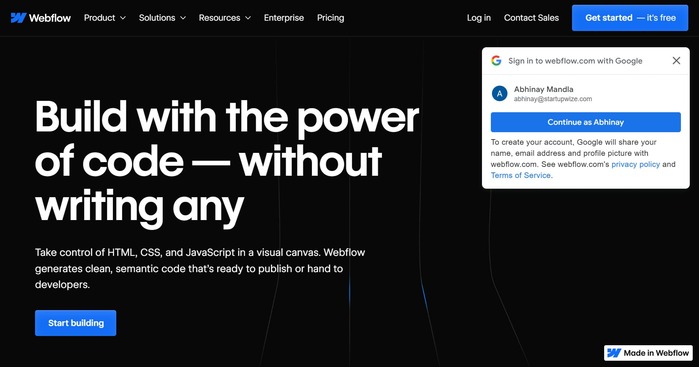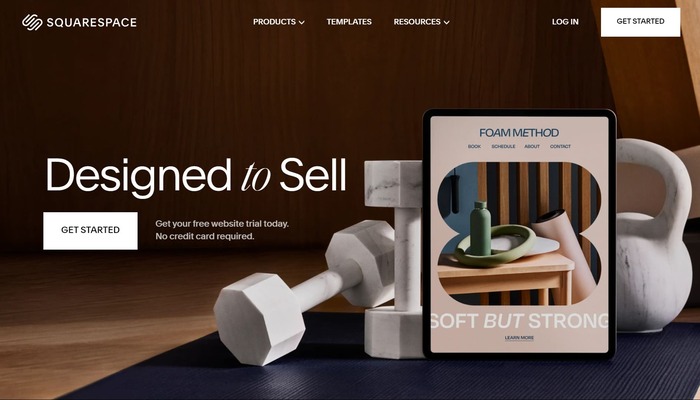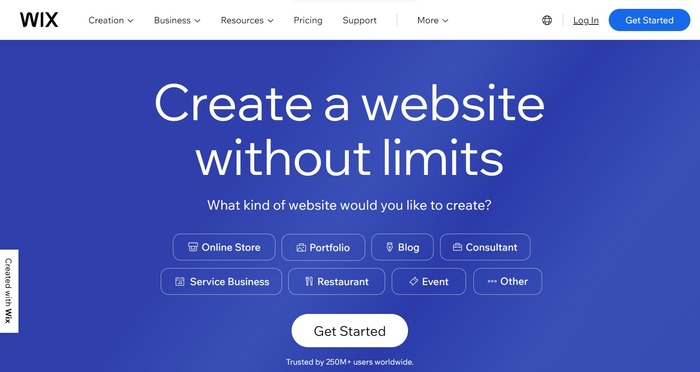Explore the chapters:
Your website is your digital storefront. It showcases your brand, educates potential customers, and ultimately, should convert all that interest into action. For startups, a user-friendly website isn’t a luxury, it’s a necessity. Here’s why a well-designed website becomes your secret weapon for attracting, engaging, and converting customers.
A user-friendly website is designed to make it easy for visitors to find the information they need, navigate through the pages, and interact with the website’s features. This creates a smooth, intuitive, and enjoyable experience for visitors, increasing the likelihood that they will feel satisfied and engaged with the site.
A user-friendly website can increase visitor engagement by making it easy for them to find what they’re looking for, keeping them interested in the content, and encouraging them to take action, such as filling out a contact form, subscribing to a newsletter, or making a purchase. This increased engagement can lead to higher conversion rates, benefiting the business.
A user-friendly website that is well-structured and easy to navigate can help search engines understand the content on the site, improving its chances of ranking higher in search results. This improved SEO means that more potential customers can find the website when they search for relevant keywords and phrases, ultimately leading to more traffic and business.
A user-friendly website shows that a business cares about the needs of its customers and is invested in providing a positive experience. This can create a sense of trust and credibility and reinforce the brand’s identity and message.
By providing a positive experience and building trust with customers, a user-friendly website can lead to higher customer retention rates. Customers are more likely to remember the company and return in the future when their experience is seamless and enjoyable.
A user-friendly website is typically built on a platform or content management system (CMS) that makes it easy to update and manage the site’s content, features, and functionality. This helps streamline website management and maintenance, reducing the workload for businesses and improving the overall efficiency of their online presence.
While creating a user-friendly website may require an initial investment, it can lead to cost savings in the long run by reducing customer support costs, increasing revenue, and streamlining website management and maintenance.
A user-friendly website that is designed with accessibility in mind makes it easier for all users, including those with disabilities, to access and navigate the site. This can help to increase engagement and conversions, as well as build brand reputation and loyalty.
With the increasing use of mobile devices to access the internet, businesses need to ensure that their websites are mobile-friendly. A user-friendly website that is mobile-responsive can increase engagement, conversions, and search engine rankings, while also building brand reputation and credibility.
Creating a user-friendly website allows businesses to differentiate themselves from their competitors and provide a more positive user experience. This can lead to increased engagement, conversions, and customer loyalty, ultimately translating into a competitive advantage.
Clear Value Proposition: Communicate your brand’s value proposition clearly and concisely within seconds of a user landing on your homepage. What problem do you solve? Why should someone care?
Targeted Content: Tailor your website content to the specific needs and interests of your target audience. Speak their language, address their pain points, and highlight solutions your product or service offers.
Simple and Intuitive Navigation: Make it easy for users to find what they want. Use clear and consistent navigation menus, logical site hierarchy, and a well-organized layout.
Fast Loading Speed: Speed is king! Ensure your website loads quickly on all devices (desktop, mobile, tablet). Slow loading times frustrate users and can significantly impact conversions.
Clean and Uncluttered Design: Avoid overwhelming users with visual clutter. Use clean layouts, white space, and high-quality visuals to create a visually appealing and easy-to-navigate experience.
Responsive Design: In today’s mobile-first world, a responsive website that adapts seamlessly to different screen sizes is crucial. Ensure your website offers an optimal user experience on all devices.
Mobile-Friendly Features: Consider features like click-to-call buttons, touch-friendly elements, and easy form-filling for mobile users.
High-Quality, Engaging Content: Provide valuable, informative content that resonates with your target audience. Address their questions, educate them about your industry, and showcase your expertise.
Variety of Content Formats: Incorporate a variety of content formats like blog posts, infographics, videos, and case studies to cater to different learning styles and preferences.
Clear and Compelling CTAs: Tell users what you want them to do next! Use clear, concise, and action-oriented CTAs that guide users towards conversions (e.g., “Sign Up for Free Trial,” “Download Our Ebook”).
Strategic CTA Placement: Place CTAs strategically throughout your website, at logical decision points in the user journey.
Inclusive Design: Make your website accessible to everyone, including users with disabilities. Follow accessibility guidelines to ensure your website is usable by people with visual, auditory, or motor impairments.
Multilingual Support (Optional): If your target audience spans different regions, consider offering multilingual support on your website to enhance accessibility for a wider audience.
Analytics Tools: Leverage website analytics tools to track user behaviour, identify pain points, and understand how users interact with your website.
User Feedback Forms: Include user feedback forms or surveys on your website to gather direct feedback from your audience. This can provide valuable insights into areas for improvement.
A/B Testing: A/B test different website elements like headlines, CTAs, and page layouts to see what resonates best with your audience and optimize for conversions.
By implementing these strategies and continuously iterating based on user feedback, you can create a user-friendly website that fosters a positive user experience, drives engagement, and propels your startup’s growth.
Schedule a free consultation call with our team today
When it comes to building a user-friendly website, choosing the right content management system (CMS) is crucial. Here are some popular CMS options for startups:

Webflow is a responsive website builder, CMS, and hosting platform all in one. It offers a visual canvas for building customized websites without coding, making it a powerful choice for startups with design and development needs.

WordPress is a widely popular open-source CMS known for its ease of use and extensive community support. It offers a vast library of themes and plugins, making it highly customizable. WordPress is an excellent choice for startups with limited technical expertise, as it allows for efficient content management and website growth.

Squarespace is an all-in-one website builder and CMS, offering visually stunning designs and ease of use. It provides a drag-and-drop interface, visually appealing templates, and integrated e-commerce functionality. Squarespace is ideal for startups aiming to quickly establish a professional online presence.

Wix is a popular website builder and CMS known for its simplicity and ease of use. It offers an intuitive website editor, a vast collection of templates, and an App Market for additional functionalities. Wix is an excellent option for startups seeking a hassle-free website-building experience.
In conclusion, a user-friendly website is essential for startups to attract and retain customers, build brand credibility, and drive growth. By choosing the right CMS platform, such as WordPress, Squarespace, Webflow, or Wix, startups can create a user-friendly website that provides a positive experience for visitors, increases engagement and conversions, and ultimately contributes to their success in the competitive online landscape.
Ever wondered how you can transform your email marketing strategy to not only build trust with your audience but also tap into new opportunities and drive tangible results? In the next chapter, we learn how to take your email marketing efforts to new heights.
Chapter 1.2: Unleashing the Power of Inbound and Outbound Strategies
638 Independence Parkway, Suite 240, Chesapeake, Virginia, USA – 23320
3 Eurospace, 4th Floor, Jyothi Imperial, Janardana Hills, Gachibowli, Hyderabad, Telangana, India – 500032
Mileta Sorokovska, Moosstrasse 19,
6003 Luzern, Switzerland
Copyright © 2024 by StartupWize